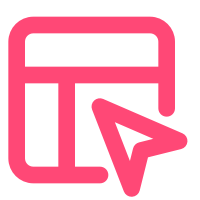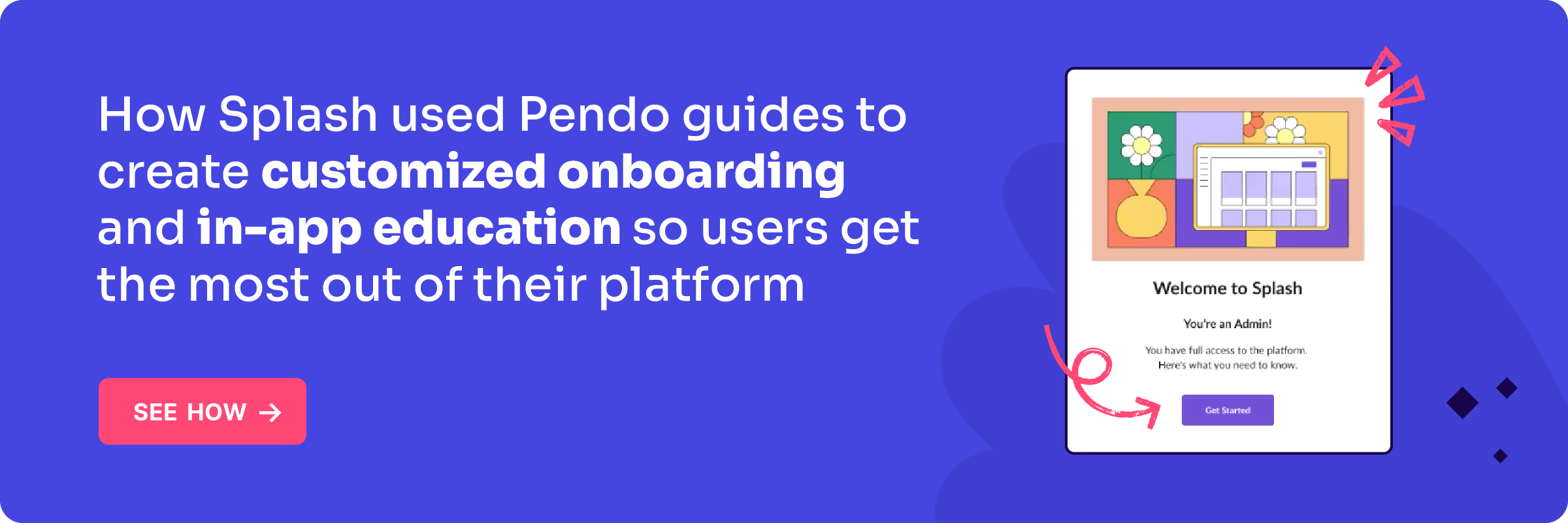Think about the last time you downloaded a new app, or had to log into a new piece of software for work. Were you left to figure it out on your own? Or did you immediately receive an email explaining the best features to try first? Or, better still, maybe as soon as you logged in you were greeted with a pop-up message welcoming you to the app?
These are all examples of product onboarding — because it happens whether the experience is managed or not.
What is onboarding?
Put simply, onboarding is the process wherein new users become proficient (and ideally, find value) in your product. It can include a variety of components (the first login experience, training sessions, in-app walkthroughs, goal-setting, etc.), and will look different for every company.
For any organization with a software product, one of the biggest priorities should be ensuring new users get value from the product as soon as possible — this initial experience is connected to, but distinctly separate from the overall user experience. But creating a successful onboarding flow is about more than just delighting the user. Bad onboarding can have long-term effects on customer happiness, and ultimately, the business overall.
Success starts at Week 0
As customer acquisition costs grow, it’s more and more valuable for businesses to retain their current customer base (Frederick Reichheld of Bain & Company found that increasing customer retention rates by 5% can increase profits by 25 to 95%). On the flipside: the rise of SaaS applications has made switching costs lower than ever, and users can easily abandon a product and move on to a better option if they don’t see value fast enough.
No matter how many new features or updates you have on the roadmap, if users don’t feel the benefits of your product right away, they likely won’t stick around long enough to experience them.

In our product benchmarks report, we found that less than 30% of users exhibit regular product usage in the first 90 days. In other words, customer churn doesn’t happen when the contract ends. It happens when your users no longer find your product useful or valuable — or fail to find it useful or valuable in the first place.
Building a thoughtful onboarding strategy
When product managers are focused on building that next feature or launching an entirely new product, it’s easy to leave onboarding to the last minute or offload it to the customer success team. But onboarding shouldn’t be an afterthought — a welcome email with a wall of text or a training session scheduled a week after log-in aren’t enough to drive successful learning and long-term adoption. There needs to be a strategy in place, both to ensure you’re guiding users to success in your product and reaching the goals you’ve established as a business.
Even though every product’s ideal onboarding flow will look different, here are three broader ways to think about an onboarding strategy:
- Self discovery: aka every new user for themself — the customer navigates the product on their own without any guidance.
- Human assisted: users are onboarded to the product with in-person training sessions and/or educational content.
- Automated in-app: this strategy meets users where they are and provides onboarding walkthroughs and training within the app itself.
As companies feel added pressure to deliver a best-in-class product experience, more and more are shifting to an in-app onboarding strategy, and for good reason. When onboarding is delivered in-app, you’re able to provide contextual information to new users as they navigate the product, and help them utilize the functionality that’s most relevant to them.

That being said, a company’s onboarding flow will largely depend on what their “value realized” point is, and which milestones they want users to achieve to get there (ideally by minimizing the number of milestones required for users to understand the product’s value). Whether your ultimate goal is free trial conversions or increased awareness and adoption of certain features, it’s important to think through your onboarding goals. From there, you can begin building out your in-app onboarding plan.
Here are some key things to consider as you get started with in-app onboarding:
- Keep it simple: your instinct might be to try and show as much value to new users as possible, but don’t do this at the expense of overwhelming them. Keep your onboarding flow as simple as possible — the last thing you want is users to already feel confused (or worse: annoyed) right off the bat.
- Plan for different learning styles: everyone learns differently, especially when it comes to learning how to use a new product. Consider different formats (videos, illustrated walkthroughs, etc.) as well as ways for users to progress — for example, by offering an option that lets them explore topics in their preferred order.
- Personalize whenever possible: your product likely serves multiple types of users, each with different needs and workflows required to drive success. By tailoring in-app onboarding to each user segment, you’re able to add an element of personalization (without needing additional resources), rather than offering the same broad experience to every user.
- Designate ownership: in some cases, companies will have a dedicated role focused on onboarding (e.g. an onboarding specialist). Otherwise, customer success (CS) or a role within the product organization will likely own onboarding. Regardless, make sure you establish clear ownership, and include the right stakeholders in the planning and execution processes (for example, if CS owns onboarding they’ll still want input from product on the UX design, which features to highlight, etc.).
Think of onboarding as an experiment
Just like everything else in product, onboarding requires a level of experimentation. By leveraging product data, you can better understand which actions in the product lead to outcomes like positive customer sentiment, retention, or trial conversion, and then ensure your onboarding directs users to those actions.
You should also be leveraging usage data to measure your onboarding’s effectiveness and see which flows are working or where users are dropping off. To start, think about onboarding measurement in three categories: engagement with onboarding materials, product usage (did onboarding impact behavior?), and business outcomes.
By combining metrics from these areas, you’ll have a better sense of what to keep doing, what to adjust, and how these efforts are impacting key results like customer retention and satisfaction. You should treat onboarding as you would any other product initiative: continuously testing and optimizing as you go.



